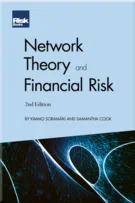Challenges and solutions for retail credit card portfolios
Jason Eckhardt
Introduction
An overview of CECL: setting the context
Outlining the most impactful assumptions and challenges under CECL: an auditor’s view
Outlining the most impactful assumptions and challenges under CECL: a banker’s view
A banking industry perspective on key CECL decisions
Challenges and solutions for wholesale portfolios
Challenges and solutions for retail mortgage portfolios
Challenges and solutions for retail credit card portfolios
Challenges and solutions for student loans
Challenges and solutions for securities portfolios
The evolution of purchased loan accounting: from FAS 91 to the CECL transition
Challenges and solutions for qualitative allowance
Challenges and solutions: an auditor’s point of view
Early view of CECL integration into stress testing: practical approaches
Too many cooks in the kitchen: mastering the art of managing CECL volatility
Beyond CECL: rethinking bank transformation
Data collision: efficient lending under CECL
Cutting through the hype: how CECL is impacting investor views of procyclicality, credit analysis and M&A
Concentration risk: the CECL magnifying glass
Closing thoughts
The retail credit card is an important part of the lending landscape, one that provides consumers with a quick and accessible line of credit while offering convenient and secure purchases in person or remotely. Unlike many retail loan classes that define the loan amount and term at origination, cardholders enter an agreement with the company that as long as they remain in good standing, they are able to use the product repeatedly and indefinitely up to their credit limit. Appropriate use of credit cards is a useful way for a cardholder to build up a credit history that may allow lower rates on mortgages or car loans.
Credit card risk is differentiated from other types of lending risk due to the high transaction volume and small transaction size, which require a very different type and frequency of underwriting compared to other consumer lending products. Credit cards also feature large off-balance-sheet credit exposures in the form of credit limits, and a large part of underwriting is ensuring these limits are commensurate with the perceived risk of the cardholder based on the latest information a company has on them. According to the Federal Reserve Bank of New York’s Q2–2020
Copyright Infopro Digital Limited. All rights reserved.
As outlined in our terms and conditions, https://www.infopro-digital.com/terms-and-conditions/subscriptions/ (point 2.4), printing is limited to a single copy.
If you would like to purchase additional rights please email info@risk.net
Copyright Infopro Digital Limited. All rights reserved.
You may share this content using our article tools. As outlined in our terms and conditions, https://www.infopro-digital.com/terms-and-conditions/subscriptions/ (clause 2.4), an Authorised User may only make one copy of the materials for their own personal use. You must also comply with the restrictions in clause 2.5.
If you would like to purchase additional rights please email info@risk.net









